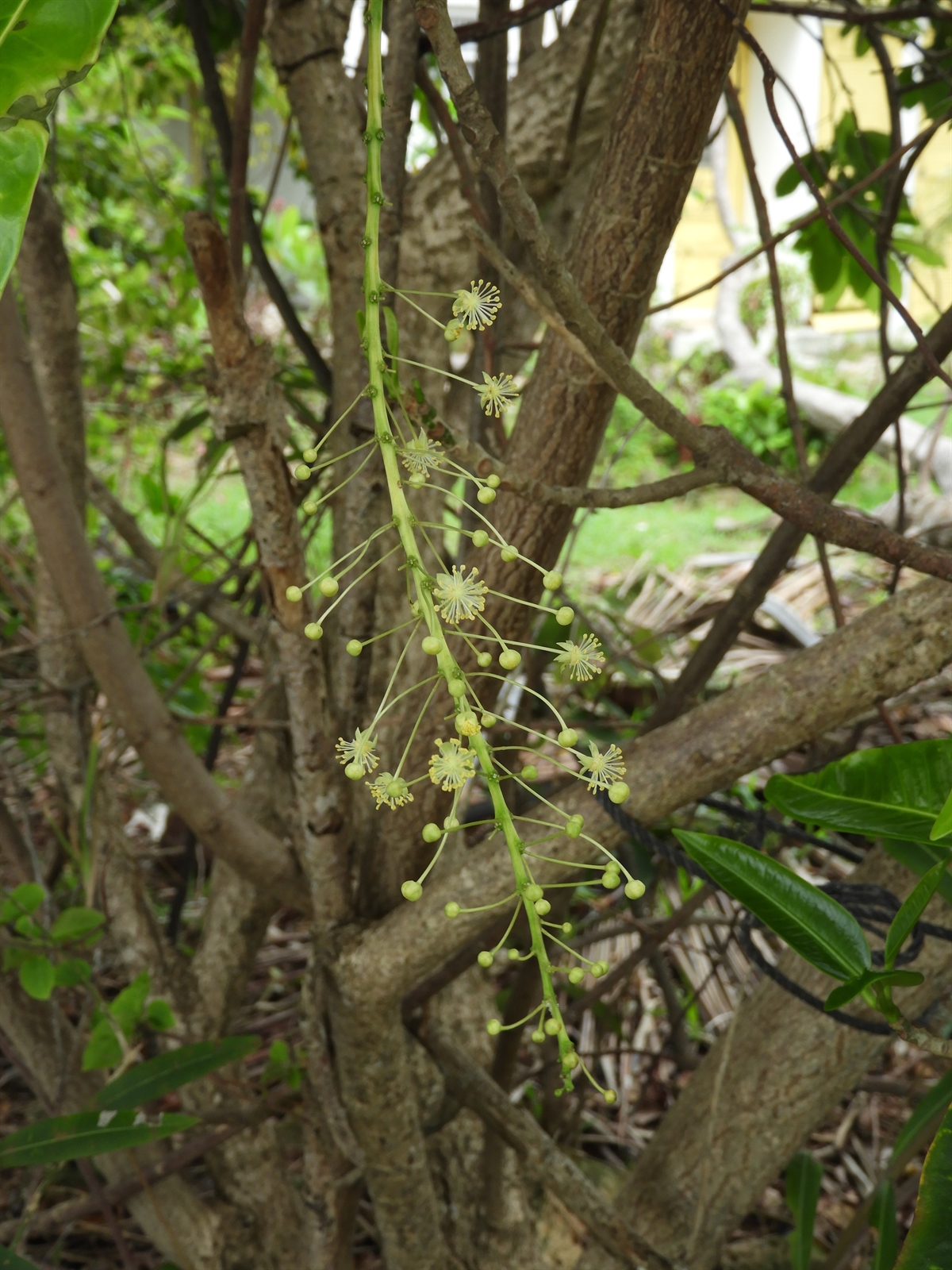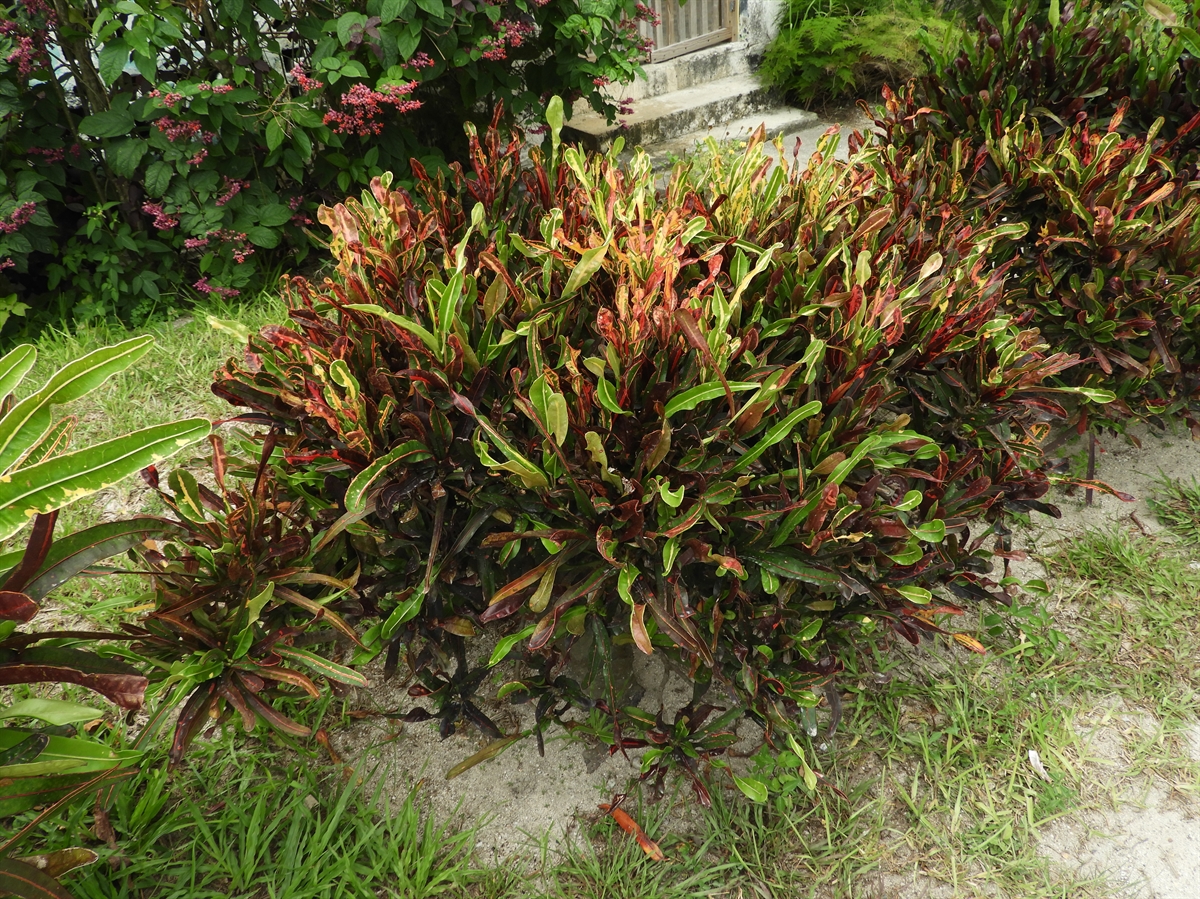Habit: Codiaeum variegatum grows as a shrub up to 4 m in height. The highly variegated coriaceous leaves are arranged alternately, linear to ovate to elliptic to lanceolate to 12 cm long and 9 cm wide. The leaves have a round leaf apex and an entire to repand margin. The leaves can range from green to yellow to red/orange.
Codiaeum variegatum is monoecious. The incomplete, imperfect, actinomorphic flowers arranged in pendulant spikes arising in leaf axils. In staminate flowers the calyx has 4 or 5 unfused, pubescent sepals and numerous stamens. There is no corolla and the carpel is non-functional. The pubescent carpellate flowers have an unfused 4 parted calyx, and no corolla or stamens. The ovary is superior and has 3 locules each with a single ovule. The fruit is a triangular capsule.
Habitat: Codiaeum variegatum grows in Human Altered environments (yards and gardens).
Distribution: Codiaeum variegatum is NOT native to the Lucayan Archipelago but occurs throughout most of the islands. It is native to Australia, the South Pacific and parts of southeast Asia.
Medicinal/Cultural/Economic usage: Codiaeum variegatum is not known to be used medicinally in the Lucayan Archipelago.
It is used in the horticultural industry due to its colorfully variegated leaves.

